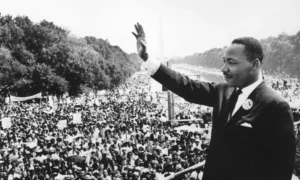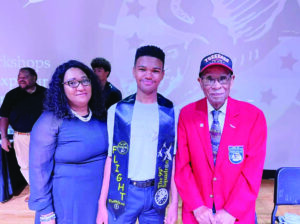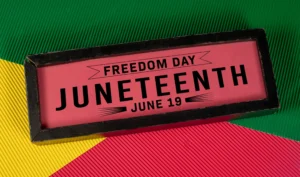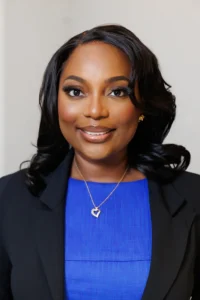The End of the All-Male, All-White Cockpit
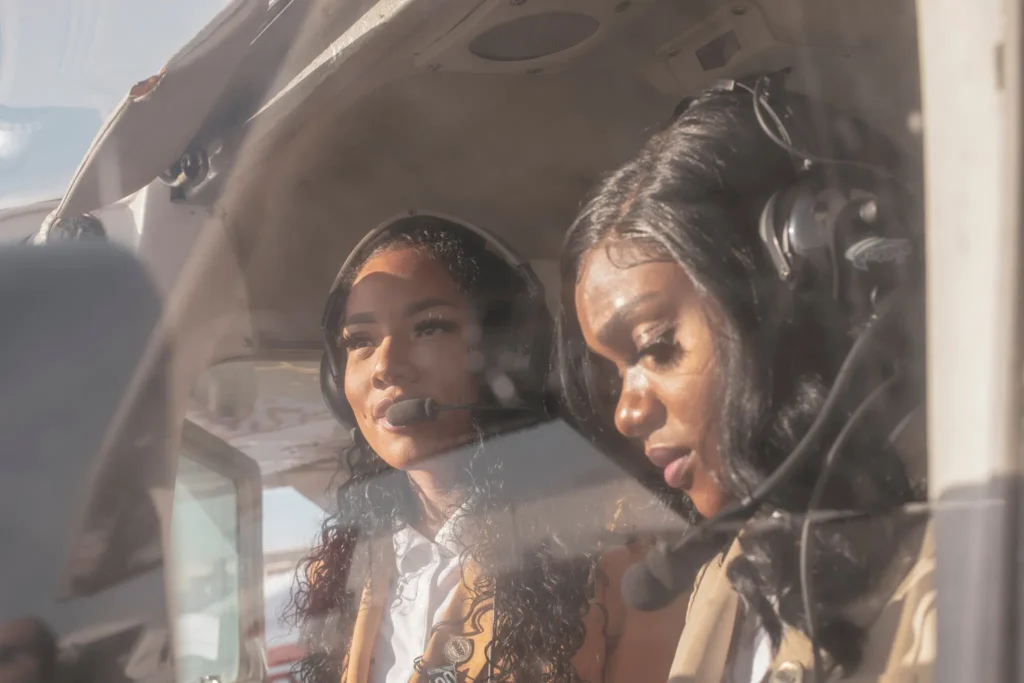
Airlines are struggling to find enough pilots and to diversify a profession that has been very resistant to change. It’s been a half-century since airlines started hiring women and people of color to fly passenger planes, allowing a handful of pioneering pilots into the flight deck.
In the decades since, commercial aviation has grown exponentially, democratizing travel and rewiring how Americans live, work and play. But one part of the industry has remained mostly the same. Piloting is stubbornly monolithic: About 95 percent of airline pilots in the U.S. today are male. Nearly as many are white.
Zakiya Percy is one of a small and growing number of people trying to change that. Ms. Percy, 29, used to dream about flying, watching planes pass overhead when she was growing up in San Francisco. “I told myself as a kid, you’re already a captain on a 777 flying international,” she said. “You just have to get there.” Now, Ms. Percy, who is Black and a first-generation college graduate, expects to have her airline pilot’s license within a year, bringing her a step closer to that goal.
For many like Ms. Percy, piloting has long been or seemed out of reach. Few women and people of color aspire to fly planes because they rarely see themselves in today’s flight decks. The cost of training and the toll of discrimination can be discouraging, too. Now there’s urgency for the industry to act. Pilots are in short supply, and if airlines want to make the most of the thriving recovery from the pandemic, they will have to learn to foster lasting change.
“The pilot shortage for the industry is real,” Scott Kirby, the chief executive of United Airlines, told analysts and reporters on Thursday. “Most airlines are simply not going to be able to realize their capacity plans because there simply aren’t enough pilots, at least not for the next five-plus years.”
Airlines have started to do more to diversify. United recently launched a flight school with the aim of hiring thousands of pilots in the years ahead, at least half of them women or people of color. Other carriers have launched similar initiatives, too. The goal is to staff up to meet the industry’s aspirations.
But for the people carrying out those ambitions, becoming a pilot is less about meeting an existential need and more about fulfilling a personal dream.
“It’s unbelievable,” said Cetrena Simmons, 29, who grew up in Northern Illinois and recently began working as a pilot at Republic Airways, a regional airline. Ms. Simmons joined Republic in 2016 as a flight attendant after graduating college, but soon realized she wanted to be a pilot and trained at the airline’s flight school. Daily business updates The latest coverage of business, markets and the economy, sent by email each weekday. Get it sent to your inbox.
“Even though I fly every day, several times a day, the adrenaline’s still going every time I take off, every time I land,” she said. “Honestly, I don’t think it’ll ever change. I think it will always be exciting.”
‘This is our club’
As air travel became more popular in the 1970s and 1980s, airline advertisements almost exclusively depicted pilots as white men, with some exceptions in publications directed at Black consumers, said Alan Meyer, a history professor at Auburn University who is working on a book on the slow pace of racial integration in airline flight decks.
“It just continues to reinforce this image,” Dr. Meyer said. “This simultaneously plays into this often subconscious association between whiteness and maleness and technical competence.” There were few Black pilots at the time, in part because airlines had only recently started hiring them. Marlon Green, a former Air Force pilot, became the first after winning a discrimination case before the Supreme Court in 1963, forcing Continental Air Lines to make him an offer. The Civil Rights Act of 1964 banned such discrimination outright, but insidious forms of prejudice have long remained. A decade later, Frontier Airlines hired Emily Howell Warner, making her the first woman hired permanently to command the cockpit for a major American passenger airline.
Undisguised bigotry was common. Ms. Warner once recalled a co-pilot refusing to shake her hand and instructing her not to touch anything in the flight deck. David Harris, a trailblazing Black pilot hired by American Airlines at about the same time that Mr. Green got his job, recalled having to bite his tongue as a white co-pilot unleashed a “nasty” tirade days after the assassination of the Rev. Dr. Martin Luther King Jr.
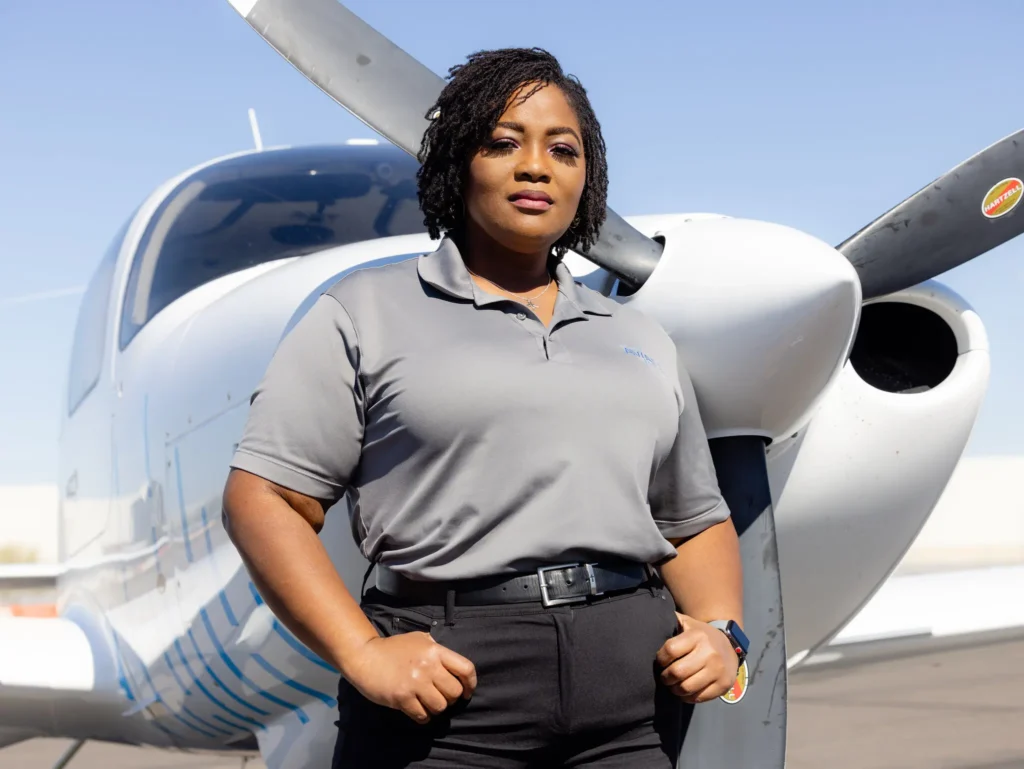
Airlines felt little pressure, from consumers or anyone else, to make it a more hospitable work environment. And because piloting jobs were well-paid and people generally stayed in them for years, those early firsts didn’t give way to broader change.
In 2015, when Ms. Percy arrived at Texas Southern University, a historically Black institution, the industry’s exclusionary past didn’t feel so far away. The school’s pilot program was new and the university didn’t own any planes, so she and other students would visit a nearby flight school to buy study materials, take written federal exams and receive training. Some of the white students and instructors there found ways of making Ms. Percy and her peers feel like outsiders, she said.
“We would get very rude comments like, ‘Oh, wow, you guys are really flying down there?’ or, ‘Oh, you want to be a pilot? Why?’” she said. “All of these different comments that suggest ‘this is our club, you can’t really be a part of it.’”
No role models, no pilots
Two years and about $100,000. That’s what it takes, in most cases, to gather the experience necessary to qualify to become a commercial airline pilot.
For Ms. Percy, that cost seemed prohibitive when she started to research flight training in earnest while in high school. She put her piloting dream on hold and, after graduating in 2011, she worked several jobs to save up to move to New York City, which she did two years later. There, she continued working to pay for her studies as a prospective psychology major at Long Island University.
But on trips home to San Francisco, Ms. Percy would arrive at the airport early to watch the gates change over and the planes and crews come and go. Unable to ignore her dream of becoming a pilot, she transferred to Texas Southern University in 2015, where she continued a grueling work schedule for about a year before deciding to cut back to focus fully on school.
“I said, ‘What is the cheat code for universities?’” she said. “They’re going to do everything they can as long as you positively contribute to their graduation and retention rate.”
Then the university called off its partnership with the flight school, making it difficult for Ms. Percy to get the pilot training she needed in time to graduate, so she switched to a concentration in aviation management. It wasn’t until she arrived at the Lt. Col. Luke Weathers Jr. Flight Academy, which was started by the Organization of Black Aerospace Professionals, in May 2020 that she began flight training in earnest. Now, Ms. Percy expects to receive her airline pilot certification within a year, with plans to pursue a Ph.D after that.
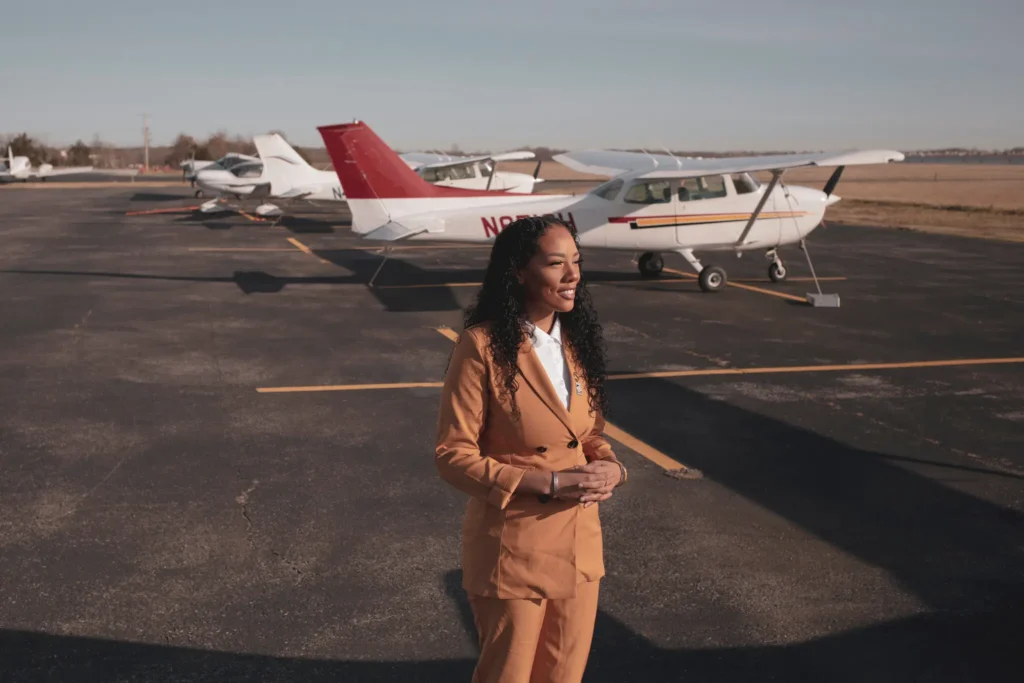
While flight school can be expensive, the payoff is improving. There were an estimated 164,000 certified active airline pilots in the U.S. last year, slightly fewer than there were in 2019, according to the Federal Aviation Administration. Desperate airlines looking to staff up have started offering early-career pilots higher salaries, bigger bonuses and better schedules. A student can earn a six-figure salary within a decade of graduating, sometimes much sooner, and a senior pilot at a major airline can easily earn several hundred thousand dollars per year. But the price is still daunting, especially in an industry that seems to swing so easily between good times and bad.
Historically, the armed forces offered a less-expensive path into the field. But the military has long struggled with pilot diversity and shortages, too. Still, the Air Force has slowly improved diversity among active duty pilots: Today, about 8 percent of those pilots are women and about 13 percent are nonwhite. While nowhere near reflective of the American public, those figures are still better than the numbers for commercial airlines.
But the reason for racial inequality among pilots that is most commonly cited by experts and instructors is perhaps the most apparent: A lack of role models and exposure has played a central role in keeping many women and people of color out the field.
“Historically, we’ve seen that a lot of our aviators come out of the military or have family members that were pilots or are somehow involved in the industry,” said Allison McKay, the chief executive of Women in Aviation International. “If you don’t have either of those two things, you may not even have considered flying.”
The group is working to change that. Every year, the nonprofit hosts an annual “Girls in Aviation Day,” with events around the world connecting pilots and other aviation professionals with children and students. The Organization of Black Aerospace Professionals and groups representing other underrepresented groups, including Latinos or the L.G.B.T.Q. community, are making similar efforts to expose more people to the field.
That might have been helpful to Ricki Foster. Growing up in Jamaica, she had never seriously considered a career in aviation. The first time she set foot on a plane was in 2001, when she was 18 and moving to the United States. After a decade working various jobs, an acquaintance encouraged her to become a flight attendant. Soon after starting that job, a pilot offered to take her on a “discovery flight,” a common way for people to get an introduction to the profession that typically includes riding in the cockpit of a smaller plane.
Ms. Foster, 38, was instantly hooked. But she had doubts. Could she really become a pilot with two children at home? Was it too late to switch careers? Could she afford the training? Then, she read an article about Carole Hopson, a Black woman and former journalist who held several corporate jobs before becoming a full-time United pilot in her 50s. Seeing someone who looked like her succeeding as a pilot encouraged Ms. Foster to pursue pilot training, which she is doing now as a member of the inaugural class at the United Aviate Academy in the Phoenix area.
“It’s nice to see yourself represented,” she said. “And I am looking forward to being that inspiration to a young Black girl: When somebody says, ‘you could be a pilot,’ and she’s like, ‘yes, I know, and I will.’
‘I would much rather do that’
The Aviate Academy covers 28 acres and has two pools, two aircraft maintenance hangars, five dorms and 27 planes, with dozens more on order. It is owned by United, which bought the flight training school in 2020, and is part of the airline’s goal of hiring 5,000 pilots by 2030. Airline-owned schools are common abroad, but United’s is a first for a large U.S. airline. The carrier says it wants at least half of the new pilots to be women or people of color. Of the 121 students enrolled so far, about 78 percent are women or nonwhite, the airline said.
United’s school joins other efforts from major and regional carriers. In 2018, American launched a partnership with flight schools in Arizona, Florida and Texas, offering prospective pilots training, financing and mentoring, with an eye toward diversity. Alaska Airlines and its regional partner, Horizon Air, unveiled a similar program in March. Universities with flight training programs are working harder to recruit women and people of color, and many have launched scholarships for students from underrepresented communities.
Major U.S. airlines say they’re confident that they will be able to hire the pilots they need in the years ahead. But regional carriers that supply many of those airlines with flights and pilots are already struggling. SkyWest, the largest regional airline, expects its aircraft utilization to be about 10 to 15 percent lower this year compared with last year because it doesn’t have enough pilots. The airline, which operates hundreds of daily flights for American, Delta Air Lines and United, had been working to address the shortage for years, but the pandemic exacerbated the shortfall, according to Robert Simmons, its chief financial officer.
After large scale buyouts and early retirements during the pandemic, large airlines have been picking up hundreds of pilots per month, often from regionals like SkyWest. Many of those being lured away are pilots with the most seniority and experience.
“The demand for our product has maybe never been higher,” Mr. Simmons said. “If we could magically create a thousand new captains out of thin air we’d be killing it.”
Republic Airways has also been dealing with shortages for years. Three years before United, Republic opened its own flight school, the Leadership in Flight Training Academy in Indianapolis.
Ms. Simmons, the flight attendant turned pilot, was one of a dozen people in the inaugural class. She had only flown twice before she applied to a wide variety of jobs, including at Republic.
“As soon as I got on the airplane for the first time as a flight attendant, I looked in the flight deck and I was like ‘wow, I would much rather do that,’” she said. Ms. Simmons, who is Black, discovered that Republic was opening up the flight school, which can now train up to 300 students per year. She applied, was accepted and started training in 2018.
In February, Ms. Simmons piloted her first flight, from Indianapolis to Newark. She was anxious, but the captain of the flight let her take the lead.
“We’re lined up on the runway and I’m like ‘oh my gosh, this is not the simulator. There’s people back there,’” she recalled. “I’m so nervous, but it was a really good nervous. It was very, very awesome — a feeling I’ll definitely never forget.”


